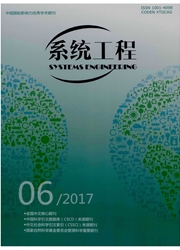

 中文摘要:
中文摘要:
当企业通过技术创新降低产品成本时,产品定价具有内生基础。针对这一特点,将传统Hote lling模型中外生的定价策略作为内生变量,研究了技术溢出王件下的三阶段R&D/产品问题:双寡头企业先决定R&D投入水平,然后对单一定价策略或歧视定价策略进行战略选择,最后在产品市场中进行价格竞争。研究发现,歧视定价是企业获得超额利润的占优策略。当市场中只有一个企业实施歧视定价时,其研发动力最强;当竞争对手同时实施歧视定价时,则该企业表现出明显的"创新惰性",研发动力减弱。在均衡定价策略下,企业利润与技术溢出水平存在正相关关系,并且适度的技术溢出有利于社会福利的增加,而过度的技术溢出将导致社会福利降低。
 英文摘要:
英文摘要:
Pricing strategy choice can be endogenous when firms reduce product costs by technology innovation. In response to this feature, product pricing strategy is regarded as an endogenous variable in a three-stages R&D/product model with technology spillovers, in which firms decide their R&D investment, and then choose pricing strategies between uniform pricing and discriminatory pricing, in the end they sustain price competition in product market. As a result, discriminatory pricing is the dominant strategy for each firm. When only one firm implements discriminatory pricing, its R&D motivation is the most intensive, when its competitor implement discriminatory pricing simultaneously, it will embody " innovation inertia" and its R&D motivation becomes weak. Under equilibrium strategy, there is a positive correlation between firms' profits and technology spillovers, and social welfare will increase with an appropriate degree of technology spillovers, but decrease with excessive technology spillovers.
 同期刊论文项目
同期刊论文项目
 同项目期刊论文
同项目期刊论文
 期刊信息
期刊信息
